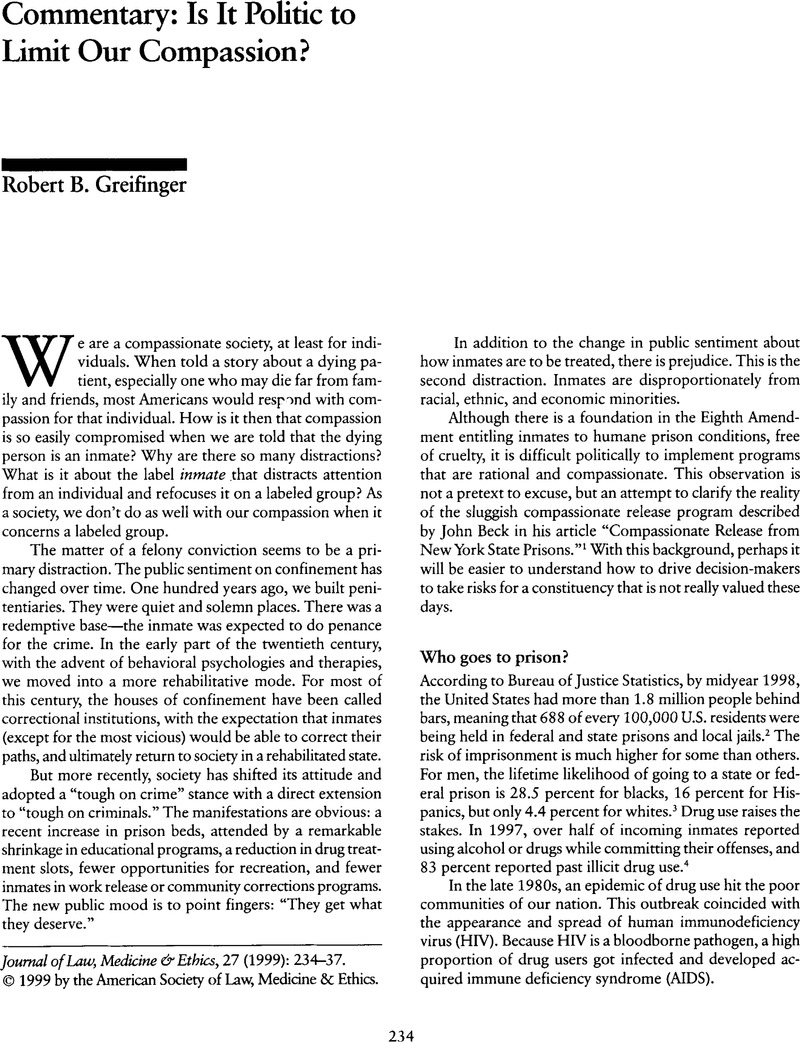Crossref Citations
This article has been cited by the following publications. This list is generated based on data provided by Crossref.
Mahon, Nancy B.
1999.
Introduction: Death and Dying behind Bars—Cross-Cutting Themes and Policy Imperatives.
Journal of Law, Medicine & Ethics,
Vol. 27,
Issue. 3,
p.
213.
2002.
Bibliography.
Journal of Correctional Health Care,
Vol. 9,
Issue. 2,
p.
181.
Handtke, Violet
Bretschneider, Wiebke
Elger, Bernice
and
Wangmo, Tenzin
2017.
The collision of care and punishment: Ageing prisoners’ view on compassionate release.
Punishment & Society,
Vol. 19,
Issue. 1,
p.
5.



